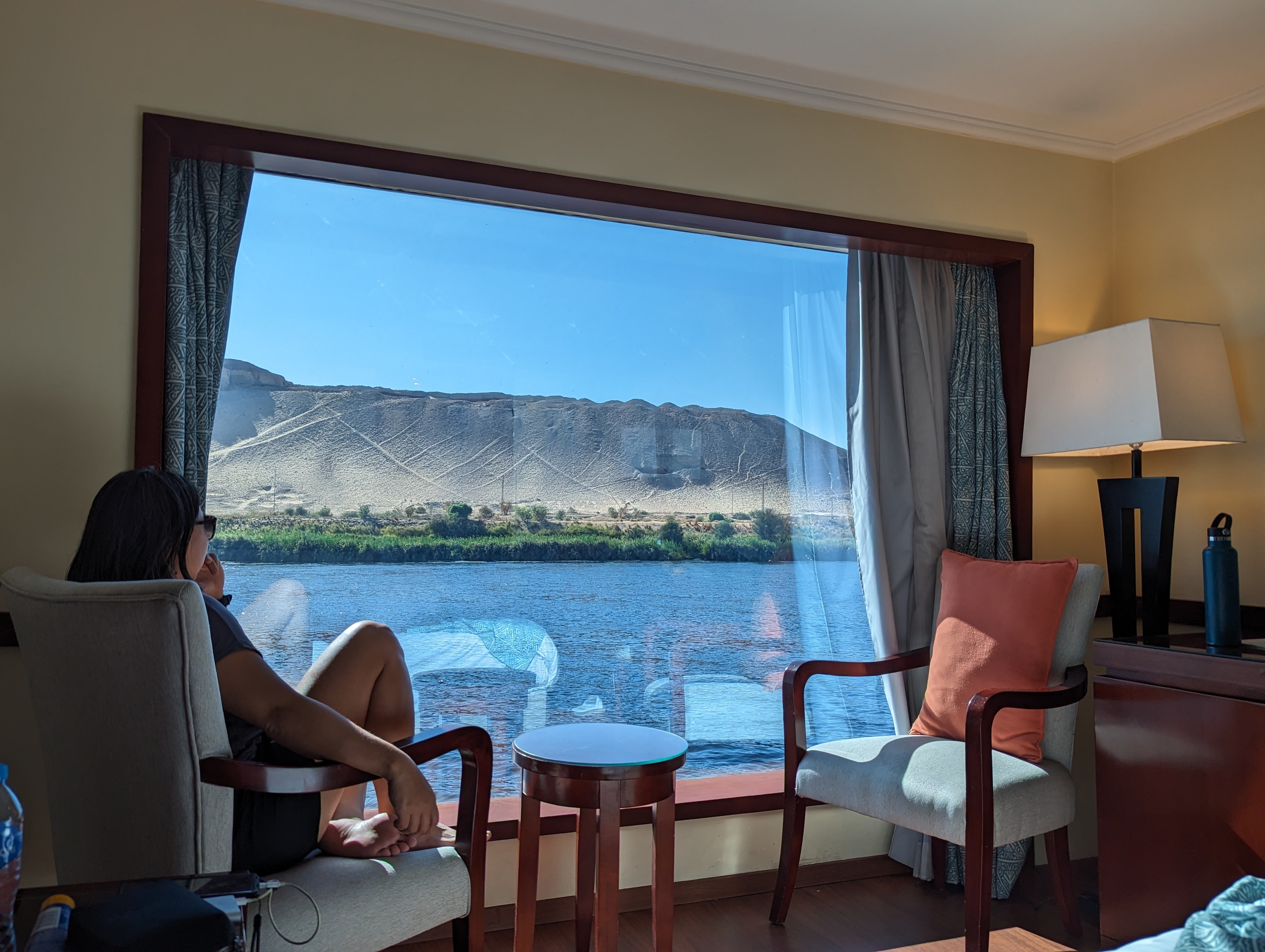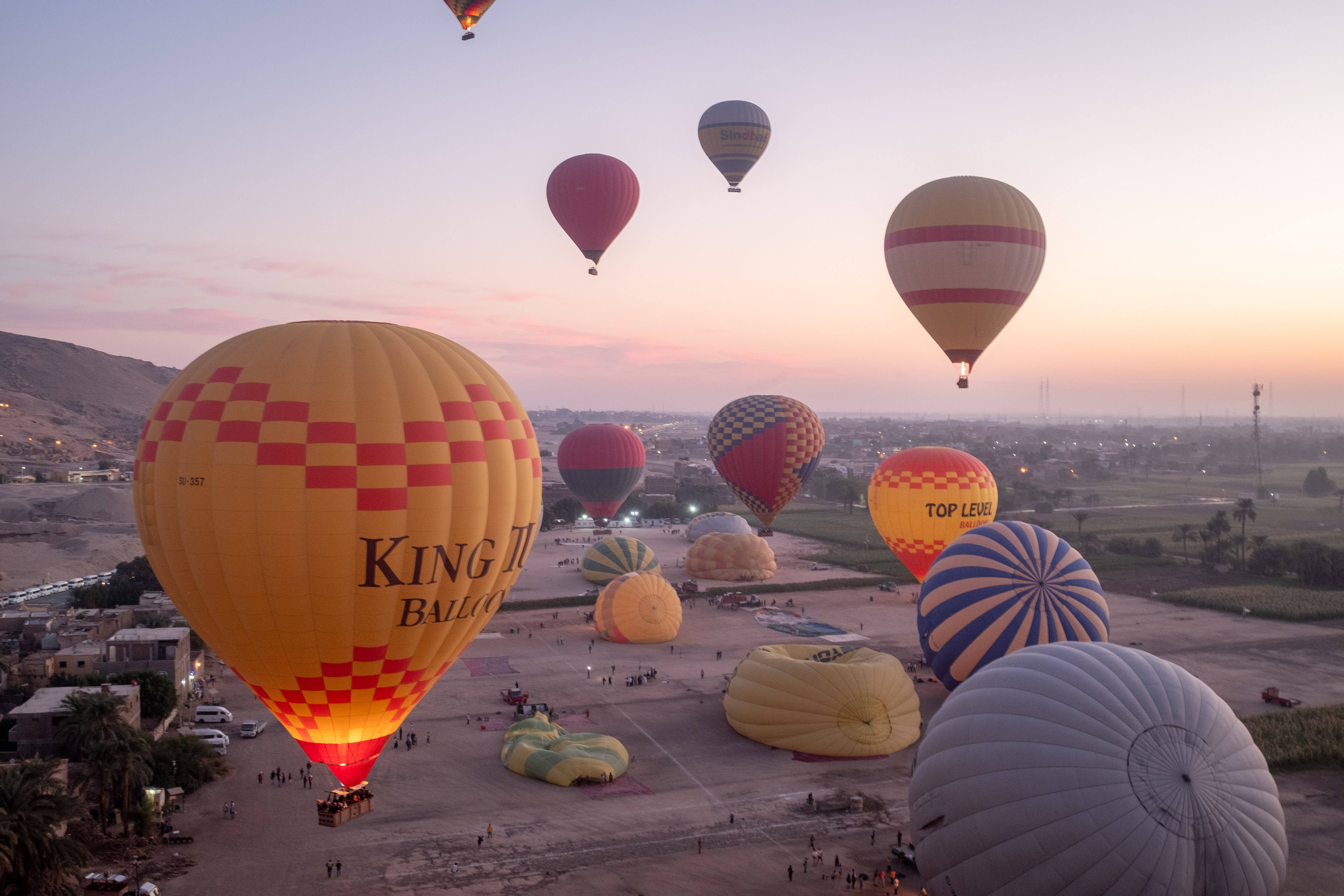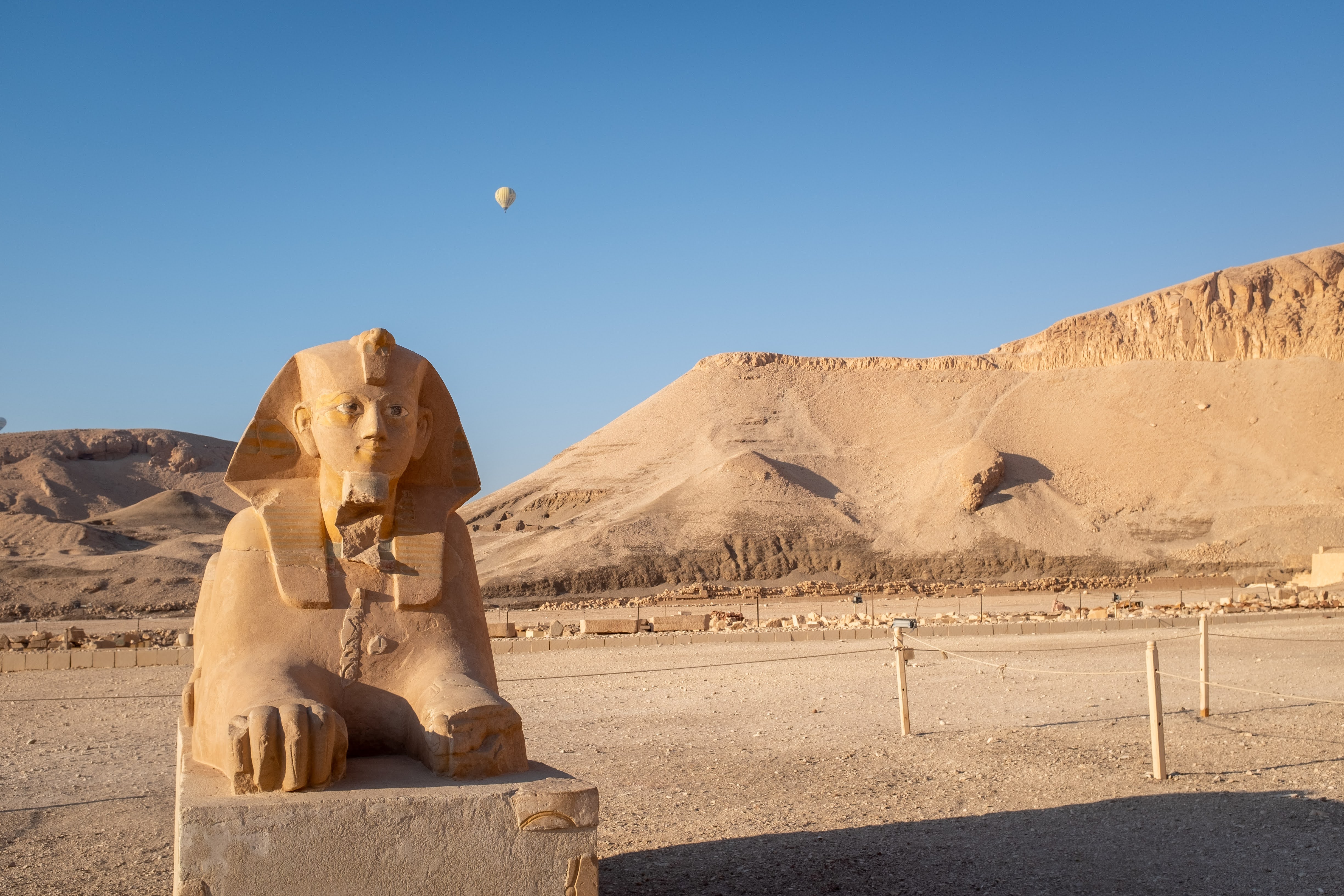With the turmoil in Gaza, we were initially nervous about making the trip to Egypt. But after checking the consulate advisories and our travel insurance, we decided to just go ahead, rationalizing that our travel itinerary was not that close to the Israeli borders.
And so we landed in Cairo October 14, late at night. Our travel representative (we booked our bespoke tour through Fly & Sea, which I highly recommend, since they took care of all the logistics, including recommending the Nile cruise and the diving liveaboard boat that best met our itinerary) met us inside the airport terminal itself, before we went through immigration. This we learnt, is the service you get if you book via a travel agent. A rep that picks you up, and delivers you safely to your driver and tour guide, in exchange for baksheesh, a few USD in tips. These little services and the tipping expectation, gave us much anxiety on the trip. Not so much the reps themselves, though we felt they were vastly under-employed, but more the expectations from having to tip every single guide, driver, porter etc – even a baggage handler at the airport who had the audacity to put his palm out for $5 USD for touching my bag on the x-ray conveyor belt. We were in a constant state trying to exchange and break Egyptian pounds into smaller bills, or decide what was worth a USD $1 tip, which quickly add up to more than US$20 every day.
I have strong thoughts against the tipping culture. It was fine on the cruise ship and the diving liveaboard, because we were told up front the suggested amount to lay aside for the end, and didn’t have to treat every single interaction with suspicion – “why are they being so friendly, what amount does this itty bit of ‘service’ translate into” – but I digress. Maybe let’s just get my one other grouse of the trip out of the way for now. We also did not enjoy was the forced visits to “government / fixed-price” shops on the tour. As part of our tour of Cairo, Aswan and Luxor, we had to make short pit stops to a cotton shop, papyrus shop, essence oil shop, and alabaster shop. These stores, we were told, featured 100% made-in-Egypt, genuine artisan works not found in the dime a dozen souvenir shops lined up outside every attraction we visited. These market souvenir stores peddled trinkets and tees made in China. Still, they were magnitudes cheaper than the government shops.
Otherwise, we had a lovely time in Egypt, and glad to have done at least a bit of homework boning up on some of the history prior to going. It’s no mean feat trying to keep track of the different pharaohs through thousands of years of Egyptian history. But our guides, Bishoy in Cairo and Ismail on the Aswan to Luxor Cruise, did a great job trying to walk us through the 31 or so different dynasties.
We started our tour bright and early at 6am on Sunday, making our way to the Pyramids of Giza just as the sun was rising. Overhead, there was a consistent buzz from dozens of paramotors gliding above the ancient structures; what an incredible way to soak in the view! Since we had neither time nor a paramotor pilot’s license, we opted instead for a short camel ride into the desert to view the pyramids from a different angle.





Since we blew through the government shop stops, we had time to stop by a coffee shop for a bit of a coffee break. We enjoyed small cups of Turkish coffee – the Egyptians’ brew of choice – thick gritty brews spiced with cinnamon and cardamon, and watched the locals sip at their brews whilst enjoying some shisha.

Other highlights of the day included a visit to the Egyptian Museum, which houses thousands of mummies and countless other antiquities, as well as the Alabaster Mosque which is on the Summit of Saladin Citadel and overlooks the pyramids in the distance.



The next day, we had an early start at 3am for our flight to Aswan, where we were met at the airport by another rep who handed us off to our driver for the day, and guide Ismail, who would be our Egyptologist for our journey down the Nile. As a side note, both Bishoy and Ismail were eager to emphasize that they had a 4-year degree in Egyptology, and that it was required to be a certified guide. I’d looked up the requirements via Bard, and it does appear much more stringent than in other countries:
To qualify for the Egyptian General Tourist Guides Syndicate (EGTGS), you must meet the following requirements:
- Be at least 21 years old
- Have a bachelor’s degree in any field
- Be fluent in Arabic
- Pass a written exam and an oral interview on Egyptian history, culture, and archaeology
The written exam covers a wide range of topics, including:
- Egyptian history from ancient times to the present day
- Egyptian culture and traditions
- Egyptian geography and tourism attractions
- Tour guiding techniques and customer service
We were definitely appreciative of their knowledge. Ismail especially, could read and translate the hieroglyphics text with ease, which made for a richer experience as we walked around the different temples, peering at all the hieroglyphics adorning the ceilings, walls, and pillars. (For a great read on how the Rosetta Stone helped decode the ancient text, I highly recommend The Writing of the Gods by Edward Dolnick)
In Aswan, we took a motor boat out to visit Philae Temple, a temple complex dedicated to the Goddess Isis. Like the Abu Simbel temple, it was one of four temples that were carefully relocated, stone by stone, in the 1960s with the construction of the Aswan High Dam. Gaudi’s Sagrada Familia in Barcelona may have taken more than 100 years to complete, but the Philae has it beat – construction began during the Ptolemaic period in the 4th century BC and continued through the Roman period until the 3rd century AD. Hence the Roman columns with their Egyptian-influenced capitals of papyrus and lotus fronts lining the temple. It was pretty cool to stand up close in real life next to monuments that were built thousands of years ago, but which still, stand tall and proud despite looting, earthquakes, defacing (including by the likes of Napoleon), recycling, and relocation.



We spent the night in Aswan, on our Nile cruiser Amwaj, then had another early start at 4am so we could make the 4 hour drive south to Abu Simbel. Bit of a trek, but considering that it was this magnificent structure in Death on the River Nile starring Gal Gadot that in part inspired us to visit Egypt, we considered it non-negotiable. In the movie though, the temple sits right on the bank of the Nile. Since the construction of the Aswan High Dam though, it’s been moved 60m up the bank, so the approach isn’t as stunning. Still, the four 20-meter tall statues of Ramses II at the entrance of the temple are an imposing sight, and the statues and reliefs inside that temple and the nearby smaller temple dedicated to the goddess Hathor and Ramses’ favorite wife Nefertari are beautiful.









We then set sail down the Nile, towards Kom Ombo. With the construction of the dam, the crocs and hippos are now walled behind in the upper Nile, which I guess makes more safer dips in the water should one fancy. We whiled the time alternately sun-bathing on the roof deck, or from the comfort of our room with its floor to ceiling windows, admiring the lush banks against the barren the desert.






As the sun began to set in Kom Ombo, we disembarked with Ismail to tour the temple complex dedicated to the gods Sobek and Horus the Elder. Highlights include the relief showing the Egyptian calendar, relief showing the tools of medicine and surgery, and the reliefs of crocodiles and the mummified crocodiles in the nearby crocodile museum.



We sailed overnight to Edfu, and woke up before sunrise to ride by horse carriage to the temple of Edfu. In Toby Wilkinson’s 2014 The Nile: A Journey through Egypt’s Past and Present, he talked about how, following the Arab Spring and the precipitous decline in tourists to the Nile Valley, the caleche-drivers of Edfu formed themselves into a militant trade union, insisting that tourists disembark at the river quay to take the 15 minute carriage ride to the temple. When we visited, we did see plenty of tour buses pulling up directly to the temple. Although the sun hadn’t yet risen, there were already a long line of tourists outside the complex, waiting for the 6am opening. Happily, once we made it through the x-ray scanners and turnstiles, the crowd dispersed enough for us to enjoy one of the best preserved shrines of the Ptolemaic Kingdom, built between 237 and 57 BC. It was not difficult to imagine the awe of the pilgrims 2000 years ago must have felt as they walked up to these structures.




We got back to the boat by 7am, in time for breakfast and to set sail towards Luxor, via the Esna Lock. It was a pretty interesting experience, first seeing all these small row boats come alongside us, their owners trying to sell us their tablecloths and towels. If people showed interest, they’d toss them up the boat, and ask for dollars tossed back down in return. More fun though – watching how quickly the water drained once we were in the lock. Within 10 minutes, we had sunk down at least 5m, to meet the level of the river south.





We arrived in Luxor in the late afternoon, with enough time to visit the Karnak temple complex and Luxor Temple. Karnak, like many of the other temples we visited, was constructed over centuries, beginning in the Middle Kingdom and through into Ptolemaic times. Approximately thirty pharaohs have their cartouches etched into the pillars and walls of the buildings, including Cleopatra.


On our last morning in Luxor, we arose again well before sunrise, this time opting for a balloon ride over The Valley of the Kings and Hatshepsut’s Temple. It was a short 45 minute ride, but a gorgeous view.







After, Ismail picked us up to visit the mortruary temple of Hetsepshut, the great female pharaoh who was lost to history until the decoding of the Rosetta stone by Jean-François Champollion, who recognized the occasional feminine grammar in the relief decorations on her temple. The temple has only earlier this year been reopened to the public, following extensive restoration by the Polish Centre of Mediterranean Archaeology. We were grateful to be able to visit, and found the complex oddly reminiscent of the Forbidden City in Beijing.




As the grand finale to our whirlwind trip through the thousands of years of Egyptian history, we visited the Valley of the Kings. Our ticket included visits to three tombs (the tombs of Ramses V & VI, Tutankhamun, and Seti cost additional, with the latter’s an eye popping 1400 EGP, or $45 USD more). We elected to visit the tombs of Merneptah, Ramses IV and IX. Even without the funerary objects and sarcophagi, they were all remarkable, with the colors of the reliefs still vibrant through all this time.







What struck me, in reflecting on our week in Egypt as we made the 6 hour drive eastwards, leaving Luxor for Port Ghalib on the Red Sea, was that even though the Pharaohs had commissioned these mighty temples, they never got to enjoy most of them them in their lifetimes. In life, they lived in mud brick palaces, buildings long since returned to the dust of earth. These temples and tombs weren’t for the living, only life after death. Even so, with their mummies either long desecrated or moved to museums all over the world, I wonder how much of the afterlife they’ve enjoyed? Also, whilst living, many of them never made it to most of the sites outside of Thebes (modern day Luxor) and Memphis where they lived, not to mention the stunning Red Sea coast. Better to live life I say, than to save it for the afterlife, haha.
